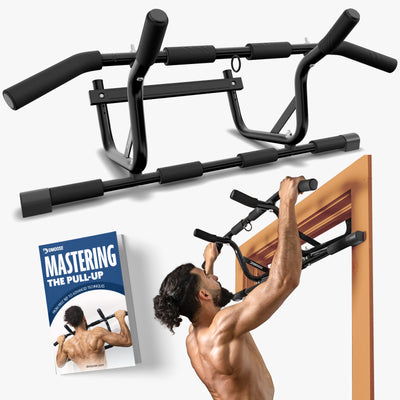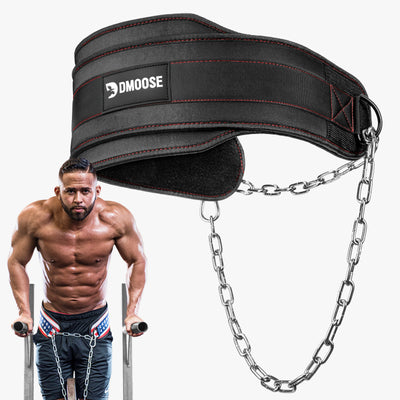Thinking about installing a Pull Up Bar for Home? Great move! But don’t let that excitement turn into a costly mistake.
While pull-up bars are one of the easiest and most effective tools for upper body training, one wrong step during setup can lead to damaged doorframes, faulty equipment, or even injury.
Whether you're a first-timer or a seasoned home gym user, this guide will walk you through the most common installation fails and show you how to avoid them.
Get ready to train smarter, not riskier.
Avoid These Costly Pull-Up Bar Setup Mistakes

Even the most reliable pull-up bars can become unsafe if installed improperly. From choosing the wrong doorway to overlooking daily safety checks, these small errors can lead to injury or structural damage. Below are the most common mistakes people make during installation, along with practical tips to help you avoid them and keep your home workouts secure.
1. Skipping the Instruction Manual
It’s tempting to rely on intuition when assembling and installing a pull-up bar, especially if the setup looks straightforward. However, each product comes with unique design features, weight limits, and mounting requirements. Skipping the instruction manual increases the risk of misplacing components, tightening parts incorrectly, or missing key safety features built into the product.
Following the manufacturer’s guide ensures that the pull-up bar is installed precisely as intended, significantly reducing the risk of failure during use. The manual often includes important warnings, tips for optimal placement, and diagrams that clarify the setup process. Taking the time to review it carefully can help avoid early wear, product damage, and potential injury.

2. Installing on Weak or Improper Doorframes
A common but serious oversight is installing a pull-up bar on a doorframe that lacks the structural integrity to support bodyweight. Older or hollow doorframes, non-standard trim, or doorways with flexible molding may not provide the necessary strength and stability. Attempting to mount a bar on these types of frames can lead to damage to the home or, worse, an unexpected fall during exercise.
To ensure safety, inspect the doorframe thoroughly before installation. Look for signs of weakness, such as warping, cracks, or loose molding. A sturdy wooden frame with solid vertical studs is ideal. If you’re unsure about the frame's integrity, it’s safer to use a free-standing pull-up tower or opt for reinforced mounting solutions that distribute weight more evenly.
3. Misjudging Tension Bar Pressure
Tension-based pull-up bars are popular because they don’t require screws or permanent installation. However, setting the right amount of tension is crucial. If the bar is undertightened, it can rotate or slip out of place during use, creating a serious fall hazard. Conversely, overtightening can cause stress fractures in drywall or wood, damaging the doorframe or walls.
To install a tension bar correctly, follow the product’s exact torque or twist guidelines, and check that the rubber ends make secure, even contact with the surface. After setup, apply downward pressure with your bodyweight to test stability before doing a full rep. Avoid using makeshift tools to tighten beyond what is recommended, as this often leads to unnecessary damage and reduces the bar’s lifespan.
4. Ignoring Weight Capacity Limits
Every pull-up bar is designed with a specific weight capacity in mind. Exceeding this limit, especially when adding weighted vests or performing dynamic movements like kipping pull-ups, can put stress on the frame and lead to sudden structural failure. Many users overlook this detail, assuming the bar will hold without issue.
Always review the manufacturer's listed weight limit before use. Consider your own weight, plus any gear or momentum you’ll generate during the workout. If you’re close to the limit, avoid high-impact exercises and reassess whether a more robust model might better suit your routine. Being mindful of load limits helps protect both your safety and the longevity of your equipment.
5. Neglecting Protective Padding
Another overlooked mistake is installing a pull-up bar without protective padding or spacers between the bar and the doorframe. Over time, repeated friction and pressure from the bar’s contact points can cause scuffs, dents, and even cracks in wooden or painted surfaces. This is especially problematic for renters who need to maintain their property in original condition.
To prevent damage, many high-quality bars come with built-in rubber or foam padding, but you can also add adhesive foam strips to vulnerable areas for added protection. Not only does this reduce wear on your doorway, but it also improves grip stability and minimizes the chance of bar slippage during use. Taking these small precautions can save you from costly repairs later.
6. Failing to Check Stability Before Every Use
Even a properly installed pull-up bar can shift over time with frequent use. Factors like wood expansion, paint wear, or slight loosening of components can affect stability. Failing to perform regular safety checks before each workout is one of the most preventable risks associated with home pull-up bars.
Before each session, give the bar a firm shake and inspect contact points for movement or slipping. If you notice any instability, re-tighten, re-align, or reinstall as needed. Taking 30 seconds to assess the bar’s security can prevent accidents, particularly during more intense exercises. Treat this habit as part of your warm-up routine—it’s a simple step that ensures long-term safety.
What to Do If Damage Occurs

Even with careful use, damage to your pull-up bar or doorway can happen over time. Knowing how to handle it ensures you stay safe and avoid unnecessary repair costs.
Steps for Minor Repairs
For surface-level damage—like paint chips, scuffs, or worn rubber grips—basic home repair solutions are usually sufficient. Wood filler or touch-up paint can restore the doorframe, while adhesive foam or replacement padding can improve protection and grip. Always clean and dry the area before applying any fix to ensure it holds well and doesn't compromise safety.
When to Discontinue Use and Replace the Bar
If the pull-up bar shows signs of structural weakness, such as a bent frame, loosened welds, or failing tension, it’s best to stop using it immediately. These issues can escalate quickly and pose a serious safety risk. A bar that consistently slips or fails stability tests, even after reinstallation, should be replaced with a model that offers better security and durability.
Contacting the Manufacturer for Support
If the damage seems to stem from a product defect or occurred shortly after purchase, reach out to the manufacturer. Most reputable brands provide warranties or satisfaction guarantees and can offer a replacement or refund if the issue is valid. Be ready to share your order number, photos of the damage, and a clear explanation of the problem for faster resolution.
FAQs
1. What happens if I install a pull-up bar on a weak doorframe?
Installing on a weak or hollow doorframe can lead to structural damage or sudden collapse during use. Always check for solid wood framing and avoid drywall-only surfaces.
2. How can I tell if my pull-up bar is properly secured?
A properly secured pull-up bar should feel stable when pulled or shaken. There should be no wobbling, shifting, or slipping. Test the setup with controlled pressure before doing full reps.
3. Can overtightening a tension bar damage the doorframe?
Yes, overtightening can create stress fractures in the wall or frame. Follow manufacturer guidelines and avoid using tools to tighten beyond hand pressure.
4. Is it necessary to use protective padding during installation?
Yes, padding helps prevent paint chipping, dents, and scuff marks on your doorframe. It also improves grip and reduces bar movement.
5. What should I do if the bar keeps slipping during workouts?
Stop using it immediately. Reassess the frame size compatibility, reinstall the bar correctly, and check for wear on rubber contact points. If slipping continues, consider replacing the bar with a more stable model.
Conclusion
A Doorway Pull Up Bar can be your go-to tool for building serious upper body strength, if it’s installed and used safely.
By avoiding these common mistakes, performing routine checks, and understanding your equipment, you’re not just protecting your home, you’re protecting yourself.
Make every rep count by setting a solid foundation for your workouts. When safety comes first, progress follows.
Reading List
- 6 Best Total Body Pull-Up Band Exercises
- Top 25 At-Home Exercises for Beginners
- Door Pull-Up Bars – Are They a Game-Changer or Just a Fad?
- Here are 8 Explosive Pull-Up Bar Exercises You Can't Miss!
- 10 Compelling Reasons to Install a Pull-Up Bar at Home
- Door Pull-Up Bars Vs. Wall Pull-Up Bars: Which One Is Better for Home Workout?











